Part Six of the What Buddhism Taught Me About Travel series
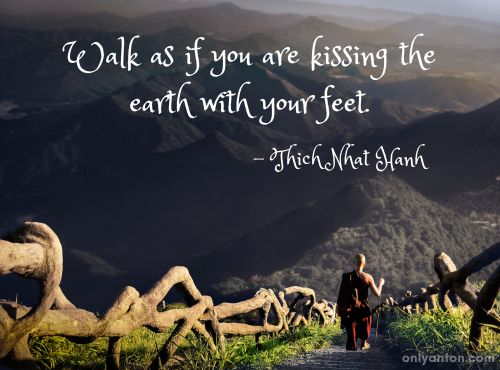
Introduction: Mindfulness and Movement
Mindfulness and movement are inseparable companions in travel. One propels us forward; the other anchors us in the present. Our bodies move through airports, train stations, and winding streets—but where is our mind? Too often, it lingers in the past, replaying memories, or rushes ahead in anticipation of what’s next. Rarely do we pause to experience the movement itself. Travel invites us into motion, but mindfulness reminds us to truly be where we are: here, now, fully present in the journey.
Movement is inherent to travel, but it’s not just physical. Travel also moves us mentally and emotionally, offering moments of joy, frustration, wonder, and reflection. When we’re mindful, we don’t just pass through places—we engage with them. Each step becomes an opportunity for connection, each encounter a chance to deepen our awareness. Whether it’s the rhythmic crunch of gravel on a mountain path or the hum of conversation on a crowded bus, mindfulness transforms the mundane into the meaningful.
In this post, we’ll explore how mindfulness enhances the travel experience. From embracing slow travel and engaging the senses to finding moments of stillness amid movement, we’ll discover how mindfulness turns every journey into an opportunity for presence, connection, and personal growth.
Understanding Mindfulness
At its core, mindfulness is the practice of present-moment awareness—fully engaging with what is happening here and now without judgment or distraction. In the Buddhist tradition, this quality is known as sati, often translated as “mindfulness” or “to remember to observe.” It’s about noticing the world around us and holding that awareness with clarity, curiosity, and compassion.
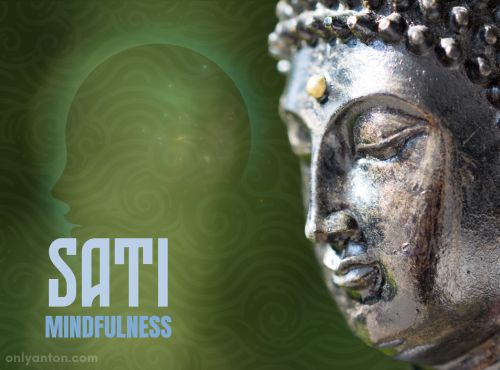
Related Buddhist Concepts
Mindfulness forms a cornerstone of the Eightfold Path, particularly in Right Mindfulness (sammā sati) and Right Concentration(sammā samādhi). Right Mindfulness encourages awareness of one’s thoughts, emotions, and surroundings, while Right Concentration cultivates focused attention, often through practices like ānāpānasati—mindfulness of breathing. This breath-based awareness fosters samatha (calm and tranquillity) while developing vipassana (insight into the nature of experience). Together, they help us engage with the world more fully while reducing the mental clutter that often accompanies travel.
Mindfulness and Travel
Travel naturally nudges us toward mindfulness. New environments stimulate the senses. Unfamiliar sounds, vibrant sights, and foreign aromas can pull us into the present moment. Yet, travel can just as easily encourage distraction. Rushing through airports, planning the next activity, or stressing over logistics can leave us mentally scattered and disconnected from the very experience we set out to enjoy.
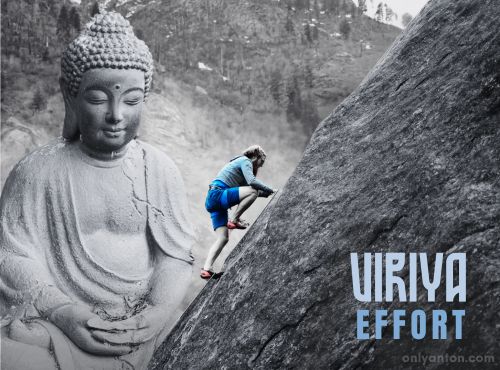
This is where mindfulness bridges the gap between movement and presence. By bringing awareness into motion, we transform the act of travel into a meditative practice. Whether it’s mindful walking through a bustling market, feeling each footstep on a forest trail, or simply observing the changing landscape from a train window, movement itself becomes an opportunity for grounding and connection. The Five Spiritual Faculties, particularly viriya (effort) and sati (mindfulness), remind us that staying present requires gentle persistence. However, the rewards are profound: a richer, more meaningful journey—not just across the world, but within ourselves.
Embracing the Journey—Travel as a Path
Travel is more than moving from one place to another. It’s a journey of self-discovery, unfolding moment by moment, much like the Buddhist path itself. In Buddhist practice, the path matters more than the destination. Mindfulness reminds us that life happens not in achieving goals but in the present experiences along the way.

Letting Go of Expectations
Mindfulness invites us to embrace travel as a process, not a checklist of sights to conquer. Yet, it’s easy to get caught up in expectations—perfect itineraries, flawless experiences, or a trip that aligns with what we’ve imagined. But travel, like life, rarely goes according to plan. Mindfulness offers an antidote by encouraging us to let go of rigid expectations and to accept the journey as it unfolds.
This idea connects closely with themes explored in The Art of Letting Go While Travelling, another entry in this series. There, I discussed how clinging to plans can intensify disappointment while openness to uncertainty fosters resilience and wonder.
Consider a common scenario: a missed flight. Frustration might be the initial reaction, but reframing the experience can shift the narrative. An unexpected delay could lead to discovering a hidden gem of a café, striking up a meaningful conversation with a fellow traveller, or simply having an unhurried moment to read, reflect, or rest. When we relinquish control, the journey itself becomes the destination, and every detour holds the potential for discovery.
Cultivating Presence in Motion
Movement and mindfulness are often seen as opposites. One evokes action, while the other suggests stillness. The two intertwine in Buddhist practice, reminding us that awareness can travel with us step by step. With its constant motion, travel offers countless opportunities to cultivate presence—be it navigating airport terminals, strolling through ancient streets, or hiking forest trails.
Mindful Walking
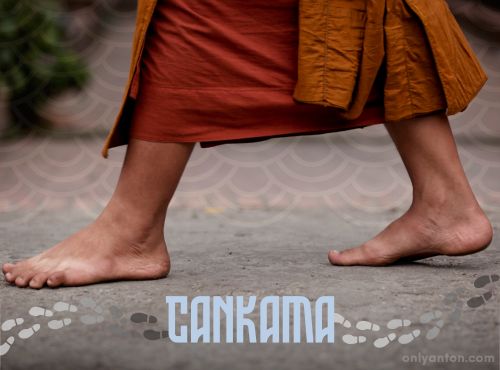
In Theravāda Buddhism, the practice of cankama, or mindful walking, bridges movement and meditation. Practitioners walk slowly and deliberately, synchronizing each step with the breath. This practice isn’t confined to monastery grounds. It can be woven into travel itself. Walking through a vibrant market, exploring a historic district, or hiking in nature becomes an opportunity for mindfulness. Each step grounds the mind, preventing it from wandering into anticipation or rumination.
Body Awareness
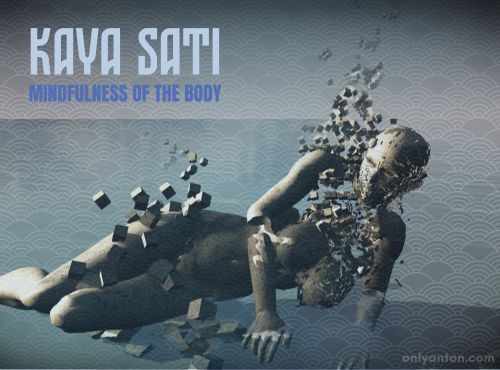
Kaya sati (mindfulness of the body) further enhances this awareness. As one of the Four Foundations of Mindfulness (satipatthana), it invites travellers to tune into bodily sensations—the weight of each footfall, the breeze on the skin, the rhythm of breath while climbing stairs. Rather than rushing from site to site, kaya sati reminds us to experience the journey through the body’s subtle cues.
Mindful Suggestions
Practical strategies for mindful movement include:
- Walking meditation: Focus on the sensation of each step, the gentle rise and fall of the foot. Silently note: “lifting, moving, placing.”
- Sensory awareness: Observe the world through the five senses. Notice the texture of cobblestones underfoot, the scent of street food, or the changing light at dusk.
- Public transport as practice: While commuting, resist the urge to scroll through a phone. Instead, observe passing scenery, the hum of voices, or the sensation of sitting.

Grounding practices like ānāpānasati (mindfulness of breathing) can further anchor attention. Simply noticing the breath while moving—a quiet inhale, a steady exhale—can transform hurried travel into a mindful journey, enriching the experience of both movement and place.
The Art of Slow Travel
In an age of bucket lists and Instagram checklists, modern travel often becomes a race—hopping from one attraction to another without truly experiencing the places we visit. Yet, travel can be more than ticking off destinations. The philosophy of slow travel invites us to pause, savour, and immerse ourselves in the journey rather than rushing toward the next highlight. It’s less about seeing everything and more about being fully present with what’s in front of us.
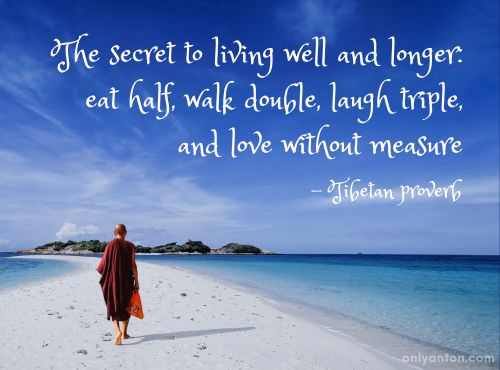
Diligence
In Buddhism, the Pali term appamada—often translated as “diligence” or “heedfulness”—perfectly captures the spirit of slow travel. Appamada encourages mindfulness in action, reminding us to engage with the world attentively and ethically. For the mindful traveller, this vigilance extends beyond personal experiences or safety—such as staying aware of surroundings to avoid pickpockets or getting lost. It also encompasses attentiveness to one’s impact on the environment and local cultures. Appamada prompts us to ask: Are we treating places and people with respect? Are we mindful of how our presence shapes the spaces we enter?
Slow travel naturally aligns with mindfulness by emphasizing:
- Fewer destinations and deeper exploration: Spending several days in one town allows for richer experiences than skimming through multiple cities.
- Spontaneity and unplanned encounters: When we aren’t rushing to the next attraction, chance encounters—a street musician’s performance, an invitation to a local café—become cherished moments.
- Cultural engagement through presence: Mindful travel fosters curiosity and connection, encouraging us to engage with local customs, cuisine, and conversation.
Personal Anecdote
I once experienced this firsthand while travelling in Kunming in southern China. Instead of rushing between sights both within and outside the city, I spent an entire afternoon in the gardens of the Dragon Fountain Temple (Longquanguan). I marvelled at the three ancient trees: the Tang Dynastic Plum, the Song Dynastic Cypress, and the Ming Dynastic Camellia. Sunlight filtered through the leaves as I listened to the soughing of the breeze and observed monks sweeping the pathways with rhythmic precision. I meandered around the Black Dragon Pool (Heilongtan) and through the Black Dragon Palace (Lower Temple). It wasn’t the number of sights I saw that made the experience memorable. It was the quality of my presence.
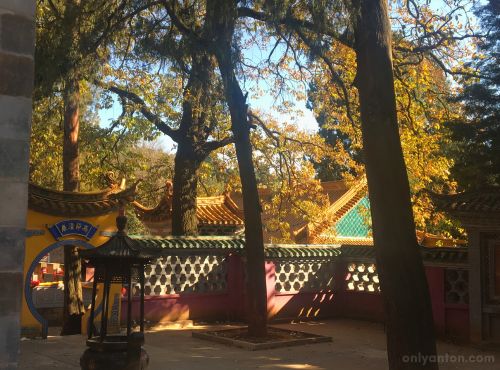
Slow travel, guided by the principle of appamada, transforms movement into mindfulness. It reminds us that the richest experiences often arise when we slow down, pay attention, and appreciate the journey as much as the destination.
Engaging the Senses: Deepening the Travel Experience
Travel unfolds through the senses. The aroma of spices in a crowded market, the sound of gravel beneath hiking boots, the vibrant colours of a sunrise over unfamiliar rooftops—these sensory moments ground us in the present. It’s easy to rush past them, distracted by itineraries or future plans. Mindfulness invites us to slow down and fully engage with our surroundings, transforming ordinary experiences into extraordinary ones.
Clear Comprehension and Careful Attention
In Buddhist practice, sensory awareness aligns with sampajañña—clear comprehension. While sati (mindfulness) anchors us in the present moment, sampajañña adds an essential layer: understanding why we are doing what we’re doing. It’s the difference between walking through a historic site while mentally planning the next stop and slowing down to appreciate the site’s textures, sounds, and cultural significance. Sampajañña reminds travellers to engage not just passively but with purpose and insight.

This mindful engagement extends to daily activities like eating, listening, and seeing. The concept of yoniso manasikāra, often translated as “wise reflection” or “careful attention,” offers guidance here. While exploring a new city, travellers can practice yoniso manasikāra by noticing how their attention shifts—toward beauty, discomfort, or judgment—and gently redirecting it toward more mindful observations. This practice ensures that mental focus aligns with wholesome thoughts and intentions rather than distractions.
Practical Sensory Exercises for Travelers
Here are simple ways to deepen sensory engagement while travelling:
- Mindful Eating: Whether savouring street food in Bangkok or a quiet café meal in Paris, eat slowly. Notice the flavours, textures, and aromas. Appreciate the effort that went into the dish—from the farmers who grew the ingredients to the cook who prepared it.
- Environmental Awareness: Pause to observe your surroundings. Feel the warmth of sunlight on your skin, the cool breeze, or the rough texture of cobblestones underfoot.
- Listening Practice: Close your eyes for a minute. Tune into the layers of sound—the murmur of conversation, birdsong, the hum of passing traffic.
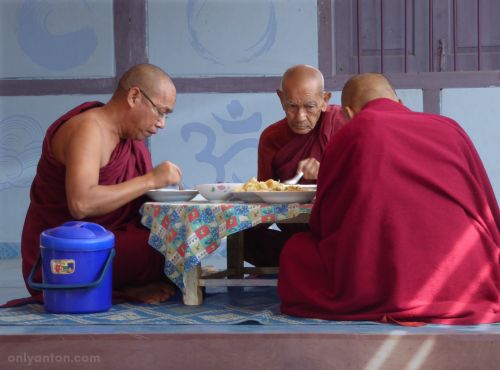
By engaging the senses mindfully, travel becomes richer and more immersive. Each moment, once fleeting, becomes an opportunity for connection and appreciation. In this way, sampajañña and yoniso manasikāra guide travellers toward more profound experiences, transforming routine movement into meaningful encounters with the world.
Finding Stillness Amidst Movement
Travel is inherently dynamic—planes take off, trains arrive, crowds shift, and landscapes blur past windows. Amid this constant motion, the mind often mirrors the external world, racing ahead to itineraries or lingering on past mishaps. Yet, mindfulness offers a paradoxical truth: stillness is not the absence of movement but a grounded awareness within it.
Buddhist philosophy sheds light on this paradox through pratītyasamutpāda or dependent origination. This concept teaches that every experience arises due to specific conditions and ceases when those conditions change. A missed train, for example, is not an isolated event but the result of interconnected causes—weather, infrastructure, the traveller’s timing. Understanding pratītyasamutpāda fosters upekkha (equanimity), reminding travellers that no moment exists independently. The bustling station, the quiet forest trail, and even the stressful airport queue are temporary manifestations of countless conditions. By recognizing this transience, travellers can respond with calm rather than frustration.
Micro-Meditations: Grounding in the Moment
Cultivating stillness amid movement doesn’t require lengthy meditation sessions. Micro-meditations—brief moments of mindful awareness—anchor the mind during travel:
- Pause Before a Meal: Take three slow breaths, appreciating the journey that brought this food to your plate.
- Breath Awareness: While waiting to board a flight or bus, focus on the inhale and exhale for one minute.
- Sensory Check-In: Notice what you see, hear, and feel while walking through a new city.
These practices, introduced earlier under mindful movement, now deepen the understanding that stillness is available anytime, anywhere.
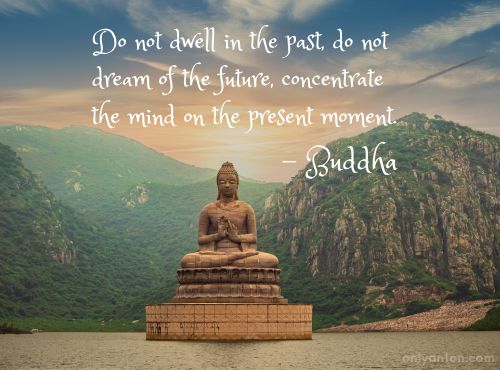
From Chaos to Clarity
Consider a delayed flight—a common source of travel stress. Instead of spiralling into irritation, a mindful traveller pauses, breathes, and observes the scene without judgment. The announcement, the murmurs of fellow passengers, the weight of the bag on one’s shoulder—all arise from interconnected causes. With pratītyasamutpāda in mind, the delay becomes less personal and less disruptive. Like any other, it is simply a moment passing as conditions shift once more.
In this way, mindfulness transforms movement into an opportunity for peace. Stillness, far from being the opposite of motion, becomes the quiet awareness that travels with us wherever we go.
Mindful Encounters—Connection Through Presence
Travel offers more than just landscapes and landmarks. It’s an opportunity to connect with people, cultures, and perspectives. True connection arises not from hurried exchanges but from mindful encounters rooted in presence. Mindfulness invites travellers to approach each interaction with openness, curiosity, and respect, transforming fleeting moments into meaningful connections.
Listening with Presence
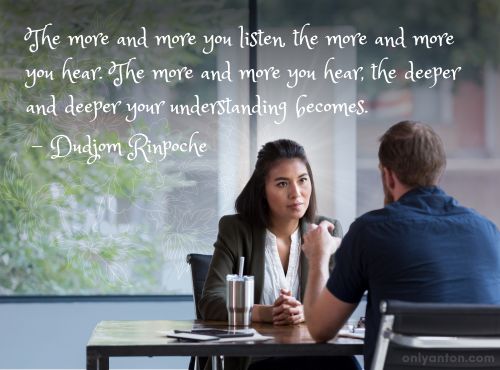
Mindful listening is the foundation of genuine connection. Too often, conversations are shaped by distraction—thinking of what to say next, checking a phone, or mentally reviewing travel plans. Mindful awareness shifts the focus from self to other, encouraging travellers to listen fully, without interruption or judgment. This simple act of presence not only deepens conversations but also fosters mutual respect and understanding.
Letting Go of Preconceptions
Approaching new cultures with an open mind means releasing preconceived notions. Every culture carries its own customs, rhythms, and worldviews. None are inherently superior or inferior. Mindfulness encourages travellers to embrace this diversity with curiosity rather than judgement. Instead of viewing differences as obstacles, they become opportunities for learning and growth.
Compassionate Travel
The Buddhist principles of metta (loving-kindness) and karuṇā (compassion) enrich mindful encounters. Metta encourages travellers to approach new environments and people with goodwill, while karuṇā fosters compassion for both others and oneself when navigating travel challenges. A missed train, a language barrier, or an unfamiliar custom becomes less frustrating when met with kindness and understanding. Though I will explore these concepts further in Generous and Compassionate Journeys, they serve here as guiding principles for respectful, empathetic engagement.
A Moment of Connection
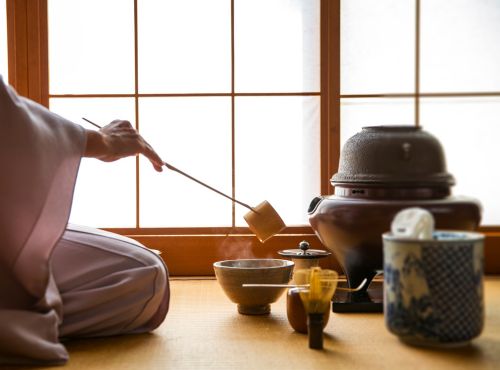
Imagine a traveller sharing tea with a local shopkeeper in a quiet village. Instead of rushing through the purchase, the traveller pauses, asks about the shop’s history, and listens with genuine interest. Sensing this sincerity, the shopkeeper shares stories of the village’s past, local traditions, and personal experiences. What began as a transaction becomes a bridge between cultures—proof that mindful presence transforms simple encounters into lasting memories.
Personal Reflections on Mindful Movement
Mindfulness is often associated with stillness, but movement can also be a powerful teacher, especially when constrained. I learned this lesson unexpectedly during my final year of studying illustration.
The Accident
That autumn, I suffered a serious injury: a broken fibula near my elbow on my dominant right arm. Without the option of a cast, my arm remained in a sling for two months, followed by rehabilitation. My professor advised me to withdraw from the program and return once healed, but I wasn’t willing to pause my progress or leave behind my graduating class.

The Decision
Instead, I made a radical decision: I would learn to draw and paint with my left hand. At first, it was frustrating—lines wobbled, and control was elusive. Yet, as I adjusted, I realized something surprising. Without the precision of my right hand, my work became looser and more expressive. Each stroke required full attention, transforming the act of drawing into a meditative practice. I was no longer rushing to complete projects but engaging fully with the process. When my right hand healed months later, I didn’t simply revert. Instead, I became ambidextrous, blending both hands in my artistic practice—mindful movement in its most literal form.
The Lesson
In retrospect, this challenge wasn’t just about adaptation but about presence. Slowing down revealed an unexpected truth: limitations can heighten awareness, transforming routine actions into opportunities for insight. It’s much the same in travel. When movement is restricted—whether by missed flights, unexpected delays, or physical exhaustion—we can either resist or lean in, embracing the moment as it unfolds. In doing so, we discover not only resilience but also a deeper connection to the journey itself.
Conclusion: Integrating Mindfulness into Travel
Mindfulness in movement transforms travel from a series of destinations into a journey of presence. Whether navigating busy streets, hiking quiet trails, or simply waiting for a delayed train, mindfulness invites us to engage fully with each moment. It allows us to experience travel as a continuous unfolding of sights, sounds, and sensations rather than a race toward the next highlight.
By slowing down, staying aware of our surroundings, and embracing the uncertainties of travel, we cultivate a deeper connection—to ourselves, to others, and to the places we encounter. This mindful approach enhances more than the journey. It transforms how we experience the world.
In the next post, Cultivating Gratitude Through Travel, we’ll explore how mindfulness naturally leads to gratitude—appreciating the extraordinary moments and the quiet, everyday experiences that make travel meaningful.
What About You?
How do you approach movement when you travel? Do you rush from one attraction to the next, or do you slow down and savour the journey?
What mindful practices could you adopt to make your next trip more enriching and present?
Share your thoughts in the comments below. I’d love to hear how mindfulness has shaped—or could shape—your travel experiences.
Glossary of Terms
These definitions provide a concise, accessible guide to the terms introduced throughout the series:
A
- Ānāpānasati: Mindfulness of breathing, a meditative practice focusing on the breath to cultivate awareness and calm.
- Anattā: Non-self, the understanding that there is no fixed, permanent self.
- Anicca: Impermanence, the idea that all things are in constant change.
- Appamada: Diligence or heedfulness, maintaining mindfulness and ethical awareness in daily actions.
- Avidyā: Ignorance or misunderstanding, the lack of true knowledge obscuring reality.
C
- Cankama: Walking meditation, a mindful practice of slow, deliberate walking to develop focus and presence.
- Chanda: Wholesome desire, a positive motivation rooted in ethical intention.
D
- Dharma: Teachings or truth, often referring to the teachings of the Buddha.
- Dukkha: Suffering or dissatisfaction, central to the Buddhist worldview.
K
- Karma: The principle of cause and effect through intentional actions.
- Karuṇā: Compassion, the heartfelt wish to alleviate the suffering of others.
- Kaya Sati: Mindfulness of the body, awareness of bodily sensations, posture, and movement.
M
- Madhyama Pratipada: The Middle Way, avoiding extremes of indulgence and asceticism.
- Metta: Loving-kindness, a practice of cultivating goodwill toward all beings.
N
- Nirvana: The cessation of suffering and the end of the cycle of rebirth.
P
- Pratītyasamutpāda: Dependent origination, the Buddhist teaching that all phenomena arise in dependence on interconnected causes and conditions.
S
- Samatha: Calm, serenity, or tranquillity, a meditative state that quiets the mind and fosters inner peace.
- Samma Kammanta: Right action, ethical conduct that avoids harm to others.
- Sammā Samādhi: Right concentration, the practice of focused, meditative absorption that fosters clarity and calmness.
- Samma Sankappa: Right intention, the cultivation of thoughts guided by goodwill and wisdom.
- Sampajañña: Clear comprehension, mindful awareness of one’s actions, surroundings, and intentions.
- Sammā Sati: Right mindfulness, the cultivation of present-moment awareness with clarity and non-judgment.
- Satipatthana: The Four Foundations of Mindfulness—body, feelings, mind, and mental objects—forming the basis for insight and presence.
T
- Tanha: Craving or unwholesome desire driven by attachment and ego.
U
- Upadana: Clinging, attachment that leads to suffering.
- Upaya: Skillful means, using wisdom and compassion to adapt actions effectively.
- Upekkha: Equanimity, a state of balance and calmness amid life’s highs and lows.
V
- Vipassana: Discriminating insight, the practice of seeing things as they truly are through mindful observation.
- Viriya: Effort, the balanced energy and perseverance needed to cultivate positive qualities and sustain mindfulness.
- Vossagga: Letting go, releasing attachment to desires, outcomes, and fixed identities.
W
- Wu Wei: Effortless action, a Taoist concept of flowing naturally with life’s processes.
Y
- Yoniso Manasikāra: Wise attention, the skill of directing the mind toward wholesome thoughts and deeper understanding.
New terms will be introduced throughout the series as needed, offering deeper insights into the teachings relevant to travel.
Further Reading and Resources
Related Posts on Only Anton
Enhance your travel experience with more insights from the What Buddhism Taught Me About Travel series and other relevant articles:
- What Buddhism Taught Me About Travel: The introductory post in this series explores how Buddhist teachings can inspire mindful and transformative travel experiences.
- Managing Expectations in New Places: Discover how adjusting expectations can cultivate openness and reduce disappointment while travelling.
- Seeing Reality Where You Are: Learn how Buddhist teachings can transform travel by helping you embrace impermanence and cultivate mindfulness.
- The Art of Letting Go While Travelling: Explore how letting go of rigid plans can lead to richer, more fulfilling travel experiences.
- Understanding Suffering Along the Path: Transform travel challenges into opportunities for growth, resilience, and wisdom.
- Mindful Travel: Finding Meaning in Our Journeys: Explore how mindfulness can elevate travel from mere sightseeing to a journey of self-discovery.
- Are You a Tourist or a Traveller? Reflect on your approach to travel and how mindfulness shapes your experience.
- Travel and Philosophy: A thoughtful exploration of how philosophical ideas can enrich your understanding of the world and yourself while travelling.
External Resources
For further exploration, consider these insightful books, articles, and websites on mindfulness and mindful travel:
Books
- Wherever You Go, There You Are, 30th Anniversary Edition by Jon Kabat-Zinn (2023): A classic introduction to mindfulness, perfect for travellers seeking presence on the road. Find it at your library, browse online, or grab your own copy here.
- The Miracle of Mindfulness by Thich Nhat Hanh (1999): A practical guide to cultivating mindfulness in everyday life and travel. See if your library has it, look online, or snag a copy here.
- Savor: Mindful Eating, Mindful Life by Thich Nhat Hanh and Lilian Cheung (2011): A practical guide to integrating mindfulness into eating and daily life, offering insights on developing healthier habits, deepening awareness, and achieving balance. Find it at your library, browse online, or grab your copy here.
- Buddha’s Brain: The Practical Neuroscience of Happiness, Love, and Wisdom by Rick Hanson (2009): How mindfulness and meditation can rewire the brain for resilience and happiness. Discover it at your library, look it up online, or purchase your own copy here.
- How to Eat by Thich Nhat Hanh (2014): A compact, meditative book that explores mindful eating as a spiritual practice, emphasizing gratitude, presence, and connection with food and the world. Locate it at a library, check online options, or purchase it here.
- The Art of Stillness: Adventures in Going Nowhere by Pico Iyer (2014): A reflective exploration of the power of stillness, arguing that slowing down and embracing quiet moments can lead to greater clarity, creativity, and peace. Find it at your library, browse online, or grab your copy here.
Articles and Videos
- “Pico Iyer on the Art of Slow Travel” by Pico Iyer, The Guardian (January 2015): Iyer reflects on how slow travel fosters deeper connections with places and cultures, emphasizing presence over hurried sightseeing. Read the article here.
- “Why We Travel” by Pico Iyer, Pico Iyer Journeys (March 2000): Iyer explores the transformative power of travel, highlighting how it broadens perspectives, challenges assumptions, and enriches the soul. Find the article here.
- “The Buddha’s Four Foundations of Mindfulness” by Bhikkhu Bodhi, Lion’s Roar (January 2023): Bhikkhu Bodhi explains the Four Foundations of Mindfulness—body, feelings, mind, and mental objects—as core practices for cultivating awareness and insight. Learn more about it here.
- “On the Practice of Right Mindfulness” by David Dale Holmes, Buddhistdoor Global (April 2021): This article explores Right Mindfulness within the Eightfold Path, emphasizing its role in ethical conduct, mental clarity, and spiritual development. See the full article here.
- “Thich Nhat Hanh’s Reinterpretation of Mindfulness” by Lam Yuen Ching, Buddhistdoor Global (February 2025): Lam Yuen Ching examines how Thich Nhat Hanh adapted traditional mindfulness practices to promote peace, compassion, and daily presence. Read the article here.
- “The Art of Stillness” by Pico Iyer, TED Talk: In this insightful talk, Pico Iyer explores how embracing stillness amid constant movement can lead to deeper clarity, creativity, and contentment in travel and life. Watch the YouTube video here.
Websites
- Tricycle: The Buddhist Review: Thoughtful articles on mindfulness, meditation, and modern Buddhist practices.
- Lion’s Roar: A comprehensive resource for Buddhist teachings and mindful living.
- Mindful.org: Practical guides and articles on bringing mindfulness into daily life and travel.
- Buddhistdoor Global: A comprehensive online resource offering articles, features, and commentary on Buddhist teachings, practices, and culture, with a focus on mindfulness, philosophy, and contemporary issues from a Buddhist perspective.




